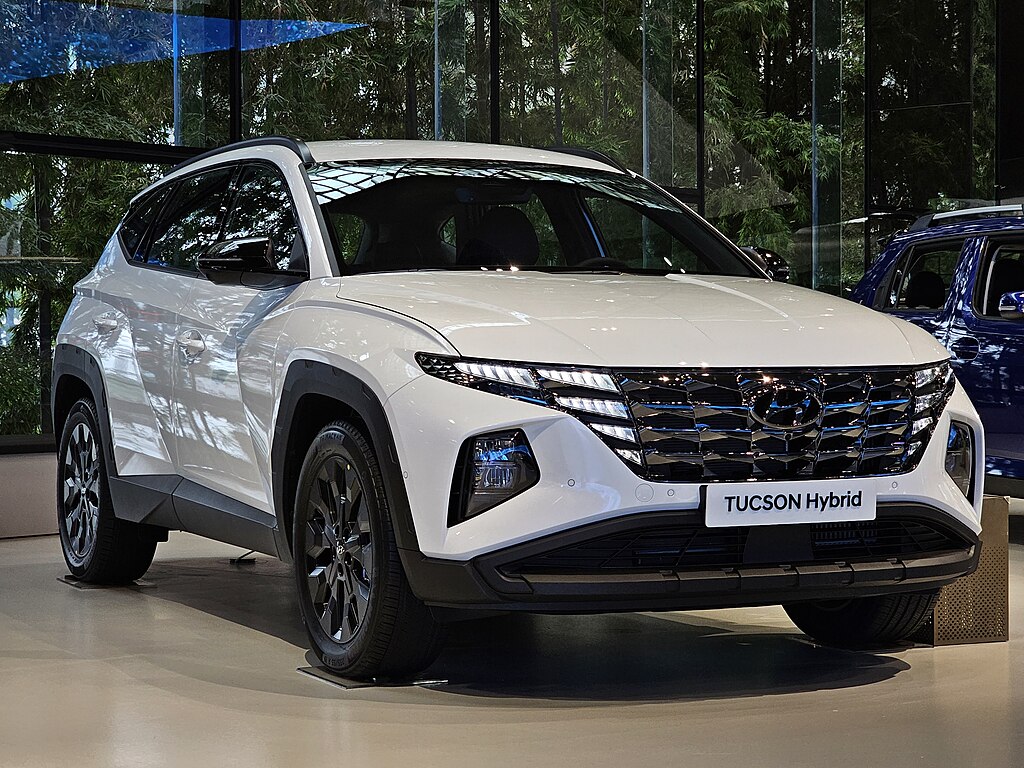Learn About 2026 Hyundai Santa Fe Models & Features
The Hyundai Santa Fe continues to evolve as one of the Korean automaker's flagship SUVs, with anticipation building for the 2026 model year. Following the significant redesign for the 2024 model year that brought bold styling and new technology, the 2026 version is expected to refine these elements while introducing new features and options. As Hyundai continues to advance its lineup with innovative technology and design elements, the 2026 Santa Fe aims to maintain competitive positioning in the midsize SUV market with potential upgrades across its various trim levels.

2026 Hyundai Santa Fe Models and Features Overview
The 2026 Hyundai Santa Fe lineup is expected to maintain its diverse range of models with possible refinements to its existing structure. The current generation features a distinctive boxy design that departs from the previous curved styling, and this squared-off aesthetic is likely to continue with minor enhancements. The trim hierarchy will likely follow Hyundai’s established pattern, potentially offering SE, SEL, XRT, Limited, and Calligraphy variants, each with progressively more premium features. The XRT trim, which focuses on a more rugged appearance with unique styling elements, is anticipated to remain as a popular option for outdoor enthusiasts. Each model is expected to offer specific feature packages that cater to different consumer needs, from basic family transportation to near-luxury accommodations in the higher trims.
2026 Hyundai Santa Fe Designs and Exterior Updates
The 2026 Santa Fe will likely maintain the bold, angular design language introduced in the recent generation while incorporating subtle refinements. The distinctive H-pattern LED lighting signatures that have become a Hyundai trademark are expected to continue, possibly with enhanced technology. The boxy silhouette offers excellent interior space and creates a commanding presence on the road, which Hyundai will likely preserve while making aerodynamic improvements. Interior design may see more significant updates, with potential enhancements to materials and textures across all trim levels. The spacious three-row configuration will remain central to the Santa Fe’s appeal for families, with possible improvements to third-row access and comfort. Color options may expand to include new exclusive finishes for premium trims, giving buyers more personalization options.
2026 Hyundai Santa Fe New Technology Integration
Technology advancements will likely be a major focus for the 2026 Santa Fe, building on Hyundai’s reputation for offering competitive tech features. The infotainment system may receive an upgrade to a newer generation with improved processing power and enhanced connectivity options. Wireless smartphone integration through Apple CarPlay and Android Auto will remain standard, but could evolve with new capabilities. The advanced driver assistance systems (ADAS) suite may expand to include more sophisticated features, potentially incorporating enhanced versions of Highway Driving Assist with machine learning capabilities. Battery technology for hybrid and plug-in hybrid variants could see improvements in energy density and charging speeds. Additionally, Hyundai may introduce more comprehensive over-the-air update capabilities, allowing the vehicle’s software systems to improve throughout ownership.
2026 Hyundai Santa Fe Powertrain Options
For 2026, the Hyundai Santa Fe powertrain lineup will likely continue offering a mix of conventional, hybrid, and possibly plug-in hybrid options. The current turbocharged four-cylinder engines may receive efficiency improvements while maintaining or increasing power output. The hybrid powertrain could see refinements to improve the balance between performance and fuel efficiency. As global markets continue pushing toward electrification, there’s potential for Hyundai to expand the electric range of plug-in hybrid variants or even introduce a fully electric Santa Fe variant to complement the existing Ioniq EV lineup. Transmission options will likely remain focused on smooth-shifting automatics optimized for fuel economy, with possible improvements to the all-wheel-drive system for enhanced off-road capability in specialized trims.
2026 Hyundai Santa Fe Potential Prices and Value Proposition
The 2026 Hyundai Santa Fe lineup will likely see modest price increases compared to previous model years, reflecting added features and technology advancements. While specific pricing details remain speculative until official announcements, we can analyze current market trends and historical Hyundai pricing strategies to provide estimated price ranges.
| Trim Level | Estimated Starting Price | Key Features |
|---|---|---|
| SE | $32,000 - $34,000 | Basic safety suite, cloth seating, standard infotainment |
| SEL | $35,000 - $37,000 | Added comfort features, enhanced tech package |
| XRT | $38,000 - $40,000 | Rugged styling, terrain-focused capabilities |
| Limited | $42,000 - $44,000 | Premium audio, leather seating, advanced safety features |
| Calligraphy | $46,000 - $49,000 | Full luxury appointments, all available technology |
| Hybrid variants | +$2,000 - $3,000 over equivalent trim | Enhanced fuel economy, slight power increases |
Prices, rates, or cost estimates mentioned in this article are based on the latest available information but may change over time. Independent research is advised before making financial decisions.
The 2026 Santa Fe is expected to maintain Hyundai’s tradition of offering strong value through generous warranty coverage (likely continuing the 5-year/60,000-mile basic and 10-year/100,000-mile powertrain warranties) and comprehensive standard features even at lower trim levels. The higher trims will compete with luxury brands at significantly lower price points, offering similar features with potentially fewer customization options.
Market Positioning and Competition
The 2026 Hyundai Santa Fe will continue to occupy an important position in the competitive midsize SUV segment. As the model evolves, it’s likely to further refine its balance of practicality, technology, and value that has helped it succeed against rivals like the Toyota Highlander, Honda Pilot, and Ford Explorer. Hyundai’s strategy of offering premium features at lower price points than competitors will probably remain central to the Santa Fe’s market positioning. The distinctive design direction helps differentiate the Santa Fe in a crowded marketplace, while Hyundai’s continuing focus on reliability and owner satisfaction bolsters the model’s appeal to family buyers seeking long-term value. As the automotive market continues its transition toward electrification, the Santa Fe’s hybrid and potential plug-in options will be increasingly important to its competitive standing.




